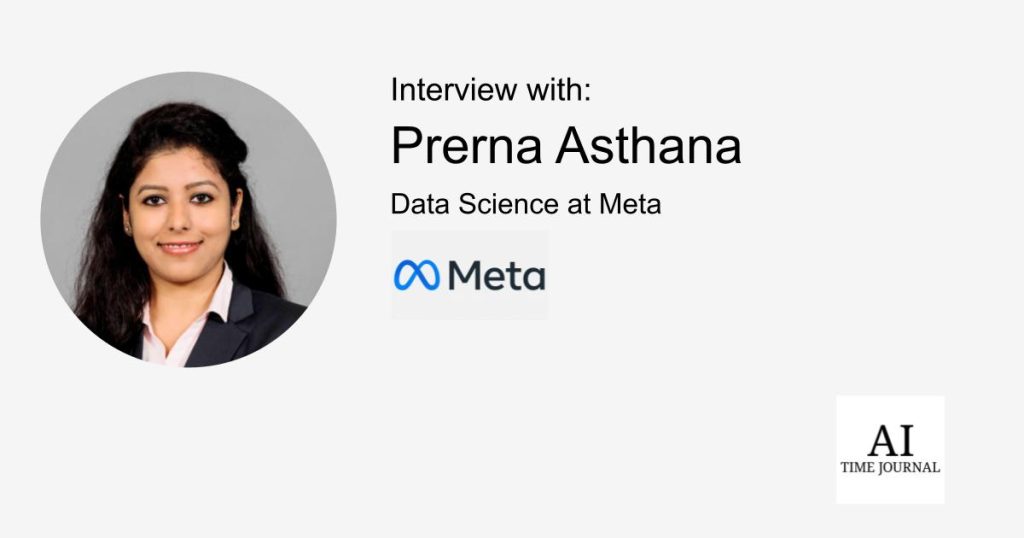
Prerna Asthana, a seasoned data science professional at Meta, is pioneering efforts to revolutionize business communication through the application of innovative machine learning algorithms. At Meta, Prerna supports the WhatsApp Cloud API business messaging team, where she plays a crucial role in enhancing system efficiency and security. One notable project under her leadership involved addressing the latency in business messaging by implementing a rigorous anomaly detection technique. Through her deep dive, she discovered unintended bot-to-bot messaging traffic that was impacting performance. Prerna then spearheaded the development of an early warning model using predictive modeling and simulations to prevent future occurrences. This initiative not only reduced messaging latency by 44% but also significantly strengthened the integrity and resilience of the Cloud API landscape against potential security threats. Her work has had a profound impact, benefiting billions of WhatsApp users and millions of businesses worldwide.
Can you describe a project at Meta where you used innovative machine learning algorithm to significantly impact a business decision or product growth?
Sure, I am currently working at Meta supporting the Whatsapp Cloud API business messaging team at Meta as the lead data scientist. It is no news that at Meta we are thriving to prevent malicious activities that impact our systems and user experience. In the same spirit, upon noticing the time it was taking to deliver incoming and outgoing business messages (a.k.a messaging latency), I conducted a thorough deep dive using rigorous anomaly detection technique and discovered unintended bot to bot messaging traffic behavior impacting the system efficiency. Not just this, I led the pioneering effort to establish early warning model to curb such events in future based on simulations – this was unique in its own way because
(1) this was not something done before in the field of Cloud API and,
(2) approach involved forward-looking vision which utilized predictive modeling and simulation to fine tune the model thresholds to address future events as well. Bearing in mind the reach of Whatsapp to billions of people and potential economic impact via millions of businesses using the platform, this was a critical achievement. Through this machine learning based effort, I reduced the latency by 44% in business messaging. Impact was powerful and industry shaping as it strengthened the integrity and resilience of cloud API landscape against security threats and fraudulent activity.
How do you ensure the accuracy and reliability of your predictive models in a fast-paced environment like Meta?
In a dynamic and ever-changing social media landscape, it is indeed very challenging but extremely critical to make sure the accuracy and reliability requirements of the models are met before introducing them into production. At Meta, we hold high bar in model development and production and involved layers of checks, debugging and use case validations. One of the things I have found to be working almost every time is to utilize simulation-based modeling so that you can cover not just the most prevalent but also the edge cases that might occur in future. Usually in machine learning, we utilize outlier strategy to exclude or cap outliers but I think we need to make sure outlier cases are met separately. That way the machine learning approach can learn from a wide variety of scenarios and increase reliability and accuracy of the variable.
Can you share an example of how you’ve used personalization through machine learning to improve user experience or engagement?
I was fortunate enough to build a machine learning based recommendation model from scratch at Amazon. At Amazon I was the data lead supporting the North America Consumer Tech team. The reason why we needed a new model was to ensure that live feedback and preferences from customer sessions along with their demographic information are combined to identify the next set of relevant products. Example – a toddler mom living in Michigan would have different recommendations compared to a single man in early 20s living in Utah who just searched for shoes. Since the model was producing results by combining demographics, purchased, and browsing data, it was able to identify use cases serving multiple family members vs single customer and structured the recommendation to suit each unique customer.
This was involved an innovative approach using neural network based ranking that was different from collaborative filtering based recommendation system that are generally used in e-commerce industry. To further augment the recommendations and reduce noise, I used information retrieval and natural language processing to remove unwanted marketing items. Fun part was testing this model with A/B test and being able to see 32% uplift in revenue. This had a lot of impact on small and medium businesses who offered variety of products but were not showing up organically in recommendations.
What strategies do you use to communicate complex data insights to non-technical stakeholders effectively?
I think communicating your findings to cross functional stakeholders is a key. As technical a data scientist can get, often times their primary stakeholders turn out to be non-technical by the nature of their role. A few strategies I have found to be working best is:
- Use simple layman terms and language to communicate your findings. Once they are comfortable and understand your premise, drive and evolve the conversation as deep into technical as can be seem to digested by the stakeholder
- Link lots of detailed material or add resources in appendix while presenting which you think might be basic but that could still be relevant for non technical audience
- Lastly, use a lot of examples to convey what you mean. For instance, regression: you can say you are adding weights in the order of importance to the ingredients of tea which altogether determine the score of its taste. This way we know which is the most critical element and how can we craft the highest scored tea again with a given set of ingredients using the assigned weights
How do you collaborate with product managers and data engineers to align data science initiatives with business goals?
Throughout my professional experience of about 8 years, collaborating with product owners and engineering teams has been unavoidable. They are usually at the heart of the product change or the feature you are looking to drive, so having them on the same page is the key to success not only as individual but also as a company. The way I go about my collaborations with them is having proport touch points and communication – having a regular meeting to understand top of minds, take and share feedback, talk about critical items and brainstorm on wildest opportunities. On goal alignment specifically, it helps to keep them involved in your analysis and over share if needed so that their feedback and understanding are incorporated since the beginning. I usually plan data initiatives ahead of time and share with them to keep them informed of my priorities, show a clear path of how it ladders up to business initiatives/ common goals, seek requests, and ensure nothing comes as a surprise later.
Can you discuss a time when you had to step out of your comfort zone to achieve a project goal, and what you learned from that experience?
For one of my early analyses at Meta, I was trying to understand the business journey on our platforms. While it seemed straightforward analysis, there were a lot of moving pieces with which I never worked before for an analysis – integrity constraints, data access issues, UX research to experience business messaging flow, incorporating survey data. To deal with each of these I realized quickly that I need to step up and plan strategically. So after identifying a point of contact for each of those areas, I created a dedicated workstream with a common tracker to add discussion points/learnings/takeaways/action items and assigned timelines for each which were aligned separately with POCs to ensure every piece comes together in a timely fashion and without any dependency or blockers. This kind of systematic planning along with parallel management of multiple core workstreams made me move out of my comfort zone and laid the foundation for my career at Meta.
What are some of the most exciting developments you see in the future of AI and automation in business?
I really believe AI and automation in businesses is a game changer. At Meta, I see so many great examples of AI coming into play and changing our lifestyle already. In business messaging we see advancements of Gen AI to reimagine the way businesses advertise and manage their communication with customers, there are AI enabled chat bots that we are implementing in messaging ecosystem to further facilitate business response to customer queries. We are also building AI based tools to auto start conversations and suggested reply for a user-initiated chat thread. These AI enabled automation and tools are specifically vital in thriving small and medium businesses who lack the resources and funds to manage headcounts to respond to customers. I am particularly excited about this part because small businesses are not only big component on Meta platforms but also 43% of US GDP and it is encouraging to work on something that gives back so much to this community to build a healthier economy
How do you envision the role of data scientists evolving in the next five to ten years, especially concerning marketing and retail analytics?
I personally believe that data science is one domain where even if AI takes over the computational part of the job, we would still require human cognitive abilities to arrive at practical and responsible decision making. Data scientist is an interesting role as today it encompasses the technical abilities of a coder/engineer, strategy of a product manager, data pipelining skills of a data engineer. So there are so many variations where it could be skewed towards any one or a combination. I think the role of a data scientist would evolve to a one where it is more strategic but also technical because at the end of the day, the AI machines are enabled with machine learning abilities that are programmed by ML specialists.
What advice would you give to someone looking to transition into a career in data science and machine learning?
I think there the data science and machine learning field covers a lot of specializations. I would advise the candidates to understand what are they really passionate about and calibrate themselves against other professionals in the field to understand what their strengths and weaknesses are. It always helps to network with such individuals with profile that you aspire towards and seek mentorship if they are open to. Other than that, be on the lookout to attend relevant conferences, read blog posts/articles, do self-study by reading or practicing hands on problem statements. These could a good shaping factors to get a flavor of the industry before becoming fully operational in the field.

 3 months ago
44
3 months ago
44







 English (US) ·
English (US) ·